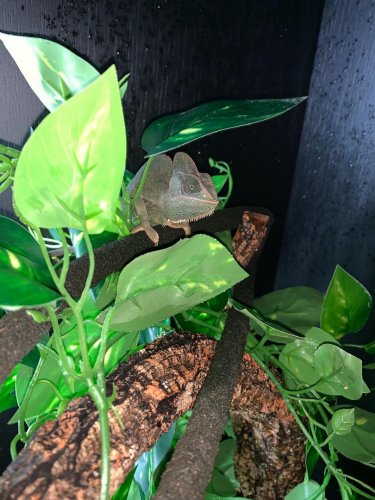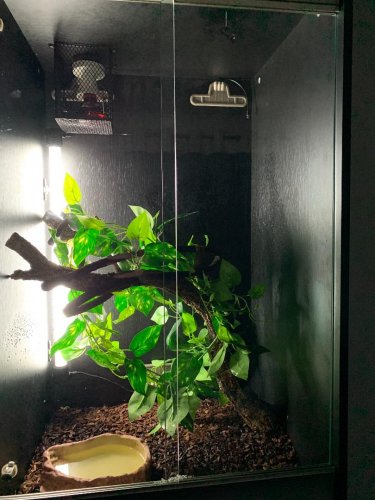Pinapple198
New Member
I bought my chameleon in September 2018, everything was fine until she just stopped eating one day. I have already taken her to the vet and they weren't any help at all. I have tried everything, I have bought her a new enclosure, I've gone from mesh to wood to keep the heat in. I have tried different foods for her, changing the temperature, adding more vines and leafs etc. I am really starting to worry now as its been over a month since she has eaten anything. Visually she doesn't look any different and she is still as active as she was when i first got her. Before when I put food near her she would get it straight away where as now she starts hissing when I go near her with food. Is there anything I can do to try and get her to start eating again? She is a little over one year old I forgot to mention.
Thanks!
Thanks!


